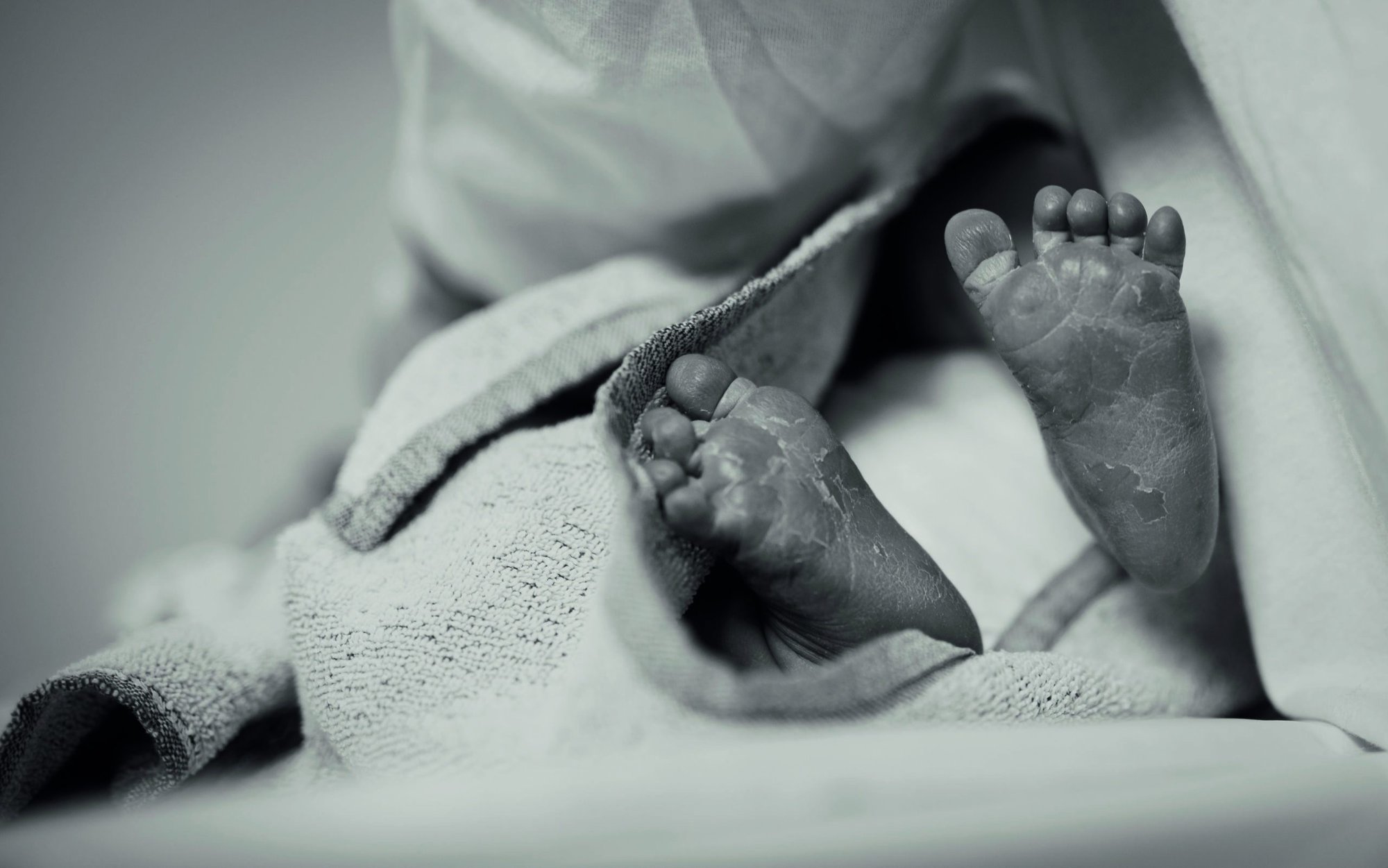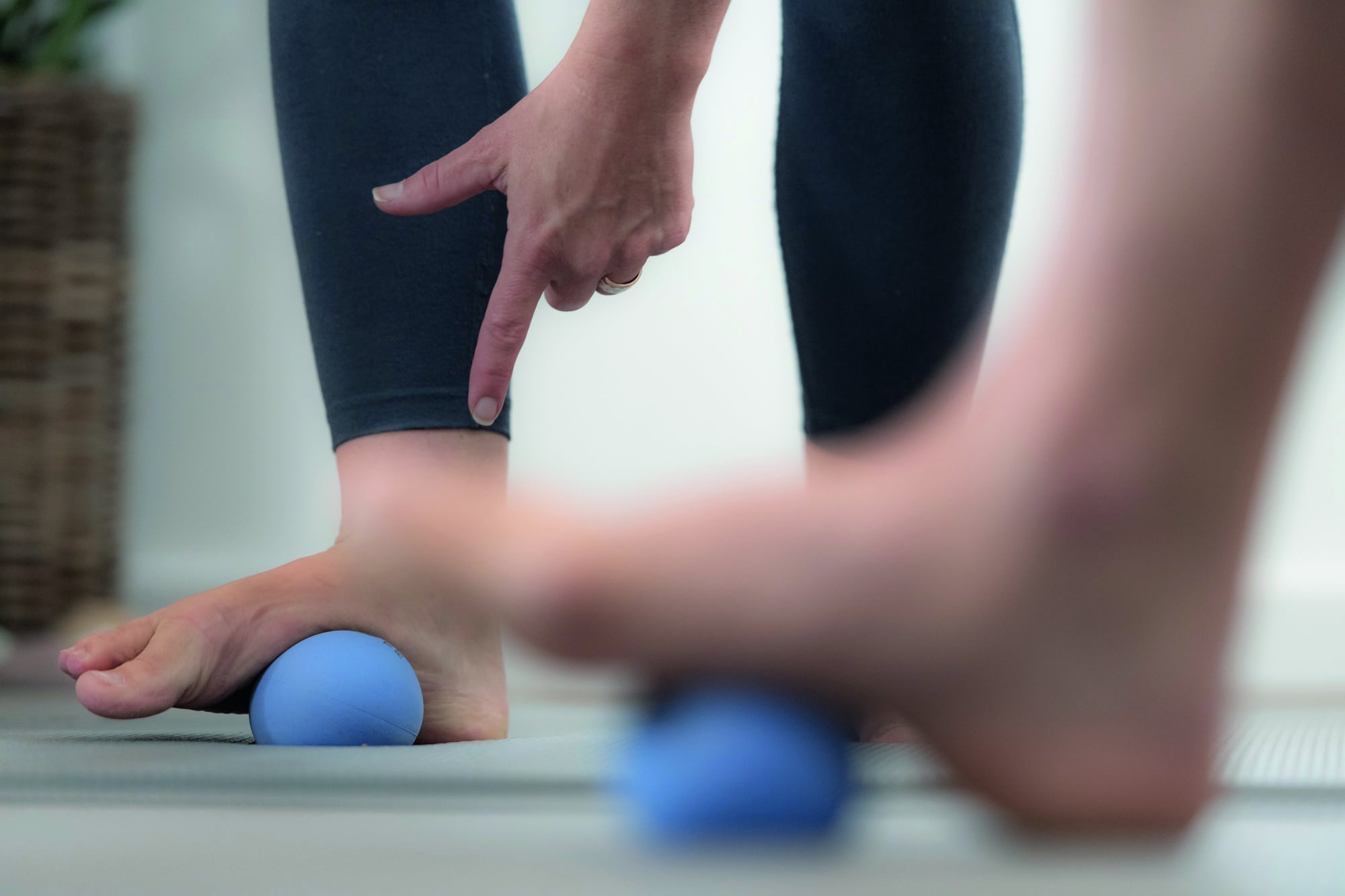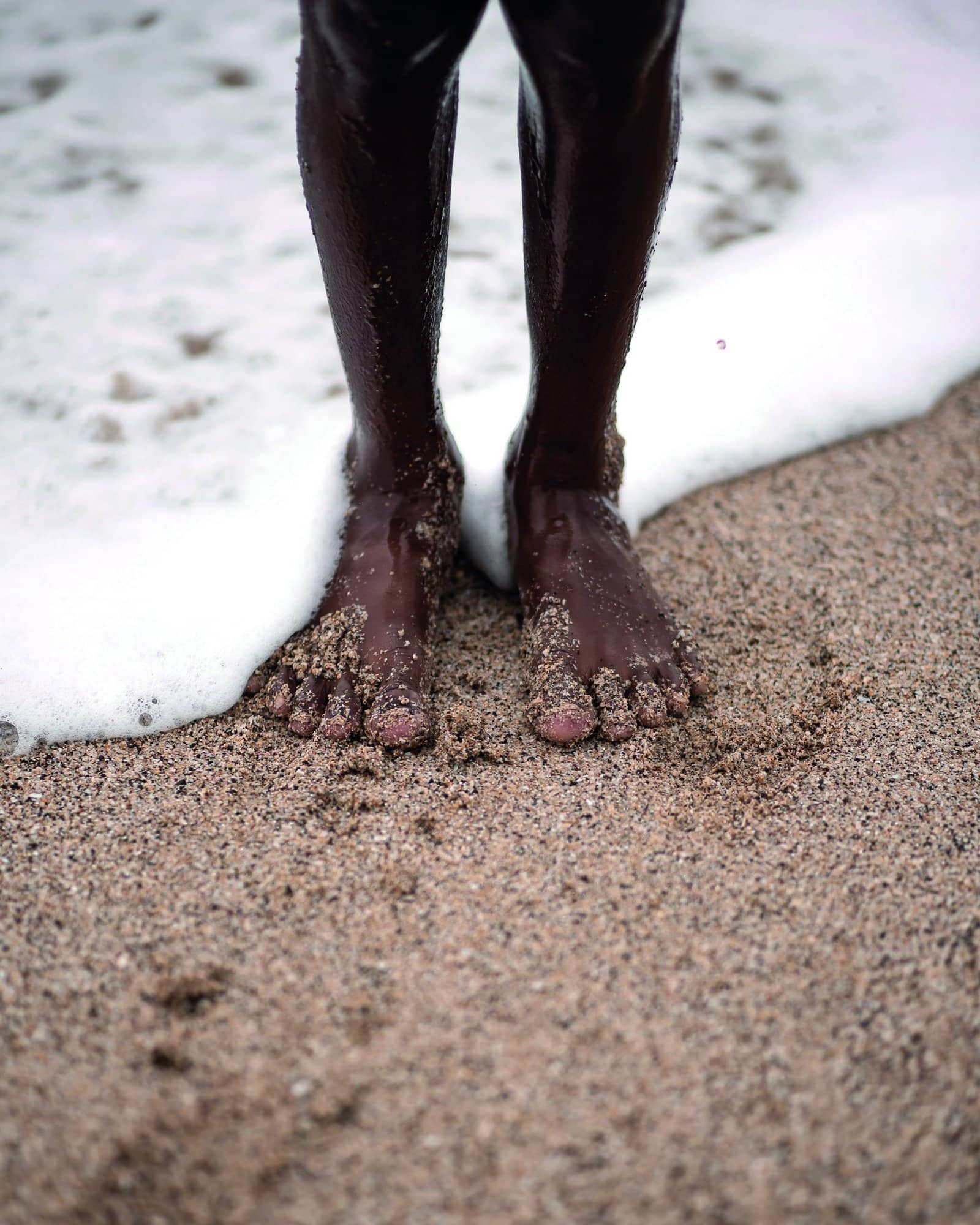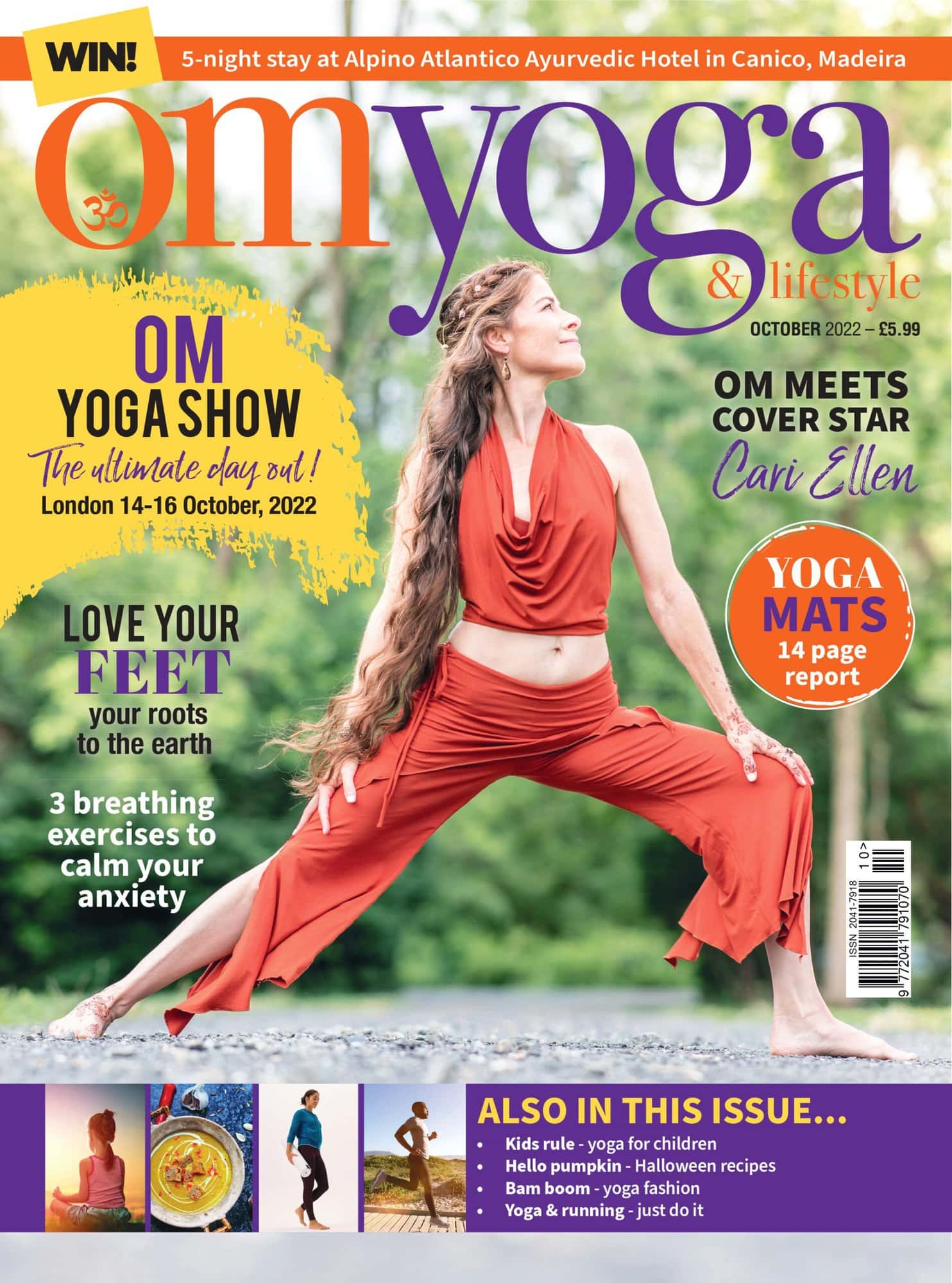
Look after your feet
and your whole body will benefit
Transform your soul — and your soles — when you include your feet in your movement practice. By Hayley Brown
Behold the amazing human foot! The human foot has 26 bones, 30 joints, three arches, as well as over 100 muscles and tendons. The joints within each foot are capable of moving in literally millions of different tiny directions in order to adapt to varied surface and terrain.
Our feet have hundreds of thousands of nerve endings and the ability to sense where we are putting our weight, the temperature, what textures we are stepping on and how to adjust position in order to move at any given moment. Being barefoot bolsters nerve health and plays a key role in coordinating dynamic movements of the whole body. Indeed, the feet are an important feature of many different therapeutic disciplines. Footwork is featured in movement practices including yoga, pilates, martial arts and more.
Reflexologists will tell you about your headaches and their relationship to certain points on the big toe. Pelvic health specialists will report that releasing tension in the foot improves the function and reflexive responses within the pelvic floor. The osteopath might treat your feet when you’ve come seeking help with your stiff shoulder.
Experts studying anatomy and human dissection have shed light on the fascial tissue connections from the soles of the toes right up to the crown of the head. Releasing tension in your foot might just be the key to eliminating your lower back pain. To assume that the foot is a separate part from the rest of the body is a missed opportunity for improving dynamic stability and function of the body as a whole.
WHEN THINGS GO WRONG WITH YOUR FEET
Footwear design with fashion and trend in mind have neglected the natural shape of the human foot so much that we now regard tapered toes as ‘normal’. When you see a newborn baby’s foot, the widest part of the foot is at the toes. We lose this somewhere along the way when shoes are introduced and toes begin to taper inwards due to narrow toe boxes and toe spring, leading to bunions, misaligned and crossed over toes, nerve pain, poor circulation and shoe-shaped feet.
Arch support, cushioned soles, heels and tapered toe boxes dumb down the sensory abilities of our feet, restricting the ability to adapt, spread and recoil with every step. The soft tissues, nerves and joints miss out on important nutrition and stimulus. Muscles atrophy or ‘go to sleep’, circulation is limited, joint surfaces get stiff and immobile and nerves get squashed, irritated and inflamed.

TECHNOLOGY OF THE SHOE VERSUS THE FOOT
We have been led to believe that the technology of the shoe is the most important element for our feet to function at their best. However, the natural innate technology we already have just needs a little love and a little space to respond to our daily movement.
The good news? There are some fantastic shoe makers now producing shoes with a wide toe box, zero drop sole (same height at the heel and ball of the foot), flexible soles and uppers, with no toe spring (the rise at the tip of the toe). These are marketed as barefoot or minimal shoes. Many of these companies also bring sustainable, ethical practices to their whole philosophy and are keen to support healthy, well-functioning feet for the long-term without compromising on style and trend.
GRADUAL TRANSITION
Transitioning gradually to more flexible shoes needs time for your foot anatomy to adjust to this new movement and space. Respect where your feet are coming from. How have they moved or not moved over your lifetime?

EXPLORE TEXTURE AND TERRAIN
Spend more time barefoot, walk on different textures and terrains. Offer those 33 joints different shapes to walk over and adapt to and notice how your feet respond. Try wearing your flattest, most flexible and widest shoes more often.

GET HANDS ON WITH YOUR FEET
Manually lengthening, stretching and moving your toes, twisting your forefoot in the directions available will begin to wake up the tissues that have gone to sleep. Using a small massage ball to roll the sole of the foot over and lean on through the foot like a pressure point tool helps introduce variation in joint movements within the foot. When we offer movements, even tiny ones, to the muscles that sit in between the long bones of the forefoot, the arch, the tendons and ligaments around the ankles, we are waking up the neuromuscular messaging from the brain to the foot.
BRING YOUR FEET INTO YOUR PRACTICE
Next time you step onto your mat, take a little time to lift and spread your toes, twinkle them, shift the weight from forefoot to heel, lift just the big toes, roll the feet over a massage ball. Bring awareness to the sensations in your feet as you practice.
Place a cushion or scrunched up towel on your mat and try a single leg balance like Vrksasana, or tree posture. The slight change from flat and level surface to lumpy will give your feet a new surface to respond to, stimulating the intrinsic muscles and nerves within the foot, feeding all this information up the leg into the hip and beyond.
LOOK FOR TEXTURE, LUMPS AND BUMPS
Take a look around your home and notice what textures are available for you to walk on. When out and about, seek out different shapes, lumps and bumps in the pavement, tree roots and stones. Step off flat and level and feel your feet responding and adapting to different textures shapes and surfaces. You might notice more response in your calves, legs and hips just by making these tiny adjustments.
FIND YOUR GROUND
When we bring awareness of the feet into daily practice, whether it’s walking, yoga, running, pilates or mindfulness, restoring the flexibility, adaptability and sensory abilities within the feet helps plug us back in to the here and now, one step at a time.
Hayley Brown is the founder of Bodyspace Movement (bodyspacemovement.co.uk)




